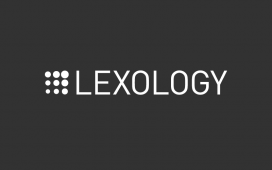

Celestia, a project focused on data availability in blockchain, launched its mainnet on Tuesday. Originating from a 2019 research paper by Mustafa Al-Bassam, the project has seen its market capitalization reach over $370 million overnight.
The buildup to Celestia’s mainnet launch was defined by a high level of speculation surrounding its eagerly awaited TIA token airdrop, one of the most talked-about giveaways in the crypto industry this year. The substantial interest reflects the project’s ambitions to solve inherent issues that plague current blockchains such as Ethereum.
Solving the Data Availability Puzzle
Celestia operates by separating data availability from other core functions of blockchain technology. In doing so, the mainnet introduces a fresh paradigm of modular architecture that enhances efficiency and scalability. The system enables layer 2 solutions and rollups built on blockchains like Ethereum to store and transmit data on Celestia’s network, alleviating stress on the base layer blockchain.
🔴 Celestia Mainnet- $TIA Airdrop / How it was a lesson to many teams
The biggest gain for @CelestiaOrg after their Mainnet and the token launch wasn’t just great marketing for their products or the impressive +2 billion FDV;
IMO, it was winning the crypto community’s trust… pic.twitter.com/QmzD4ijSdk
— Alpha Insiders (@AlphaInsiders) November 1, 2023
The core technology behind Celestia’s operation is Data Availability Sampling (DAS), which permits light nodes on the network to confirm data availability through randomized sampling of block data, without downloading entire data blocks. This becomes increasingly effective as more sampling rounds are completed, allowing a node to affirm the data’s availability once a pre-set confidence level is achieved.
The Role of TIA Token in the Mainnet
The TIA token plays a key role in ensuring the smooth functioning of Celestia’s services. It acts as a form of payment for developers who wish to store or access data through the network. By charging fees in TIA tokens for data-related transactions, Celestia sustains its unique model focusing exclusively on data availability.
Mustafa Al-Bassam, the project’s founder, has years of research behind him and the added credibility of academic collaborations with figures like Ethereum founder Vitalik Buterin. Celestia seems to offer a specialized solution, diverging from rivals like Avail and EigenDA which offer a broader set of capabilities.
Shaping the Future of Modular Blockchain Infrastructure
Celestia is currently the only network fully dedicated to providing data availability services, compared to rivals like Avail and EigenDA which offer more general capabilities. Its approach signals a broader trend toward specialized modular blockchain networks optimized for specific functions. With this launch, Celestia has presented a possible pathway for solving major challenges such as scalability and interoperability that impact existing blockchain networks.
With roots tracing back to Al-Bassam’s research half a decade ago, the launch represents a major leap in the ongoing push for blockchain modularity.
In short, Celestia’s mainnet launch is an important development for the blockchain industry. Its focus on data availability and modular architecture holds potential to alleviate some of the key challenges facing blockchain networks today.










